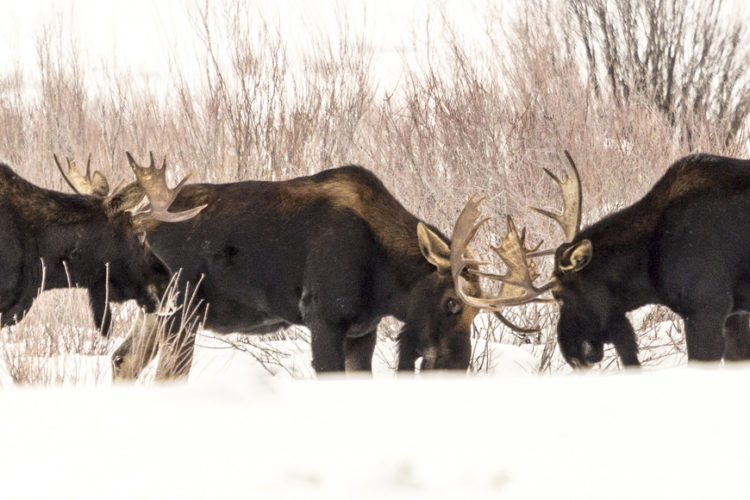We have much more to do and your continued support is needed now more than ever.
Climate change, pollution and mining: Moose pay the price
If we need evidence that our changing climate, polluted waterways, and mining on public lands directly impacts wildlife, consider the plight of moose.
The majestic animal is struggling with disease and tick infestation – all tied to warmer temperatures. And so many of the healthy waterways moose depend on are threatened by pollution from mining and other sources.
How bad is it? Moose populations are quickly shrinking in parts of the Northeast, and have dropped so dramatically in four upper-Midwestern states (Minnesota, North Dakota, Wisconsin and Michigan’s Upper Peninsula) that moose there may need protections under the Endangered Species Act.
TAKE ACTION: Help protect moose and all wildlife by asking your members of Congress to commit to a strong wildlife conservation agenda in 2017. Send your message here, and give moose the voice they deserve!

In June 2016, the U.S. Fish and Wildlife Service began a year-long review of moose for the Endangered Species Act, noting moose suffered “significant declines due to climate change, habitat degradation and disease, among other factors.” The designation would make it illegal to hunt moose in those areas and possibly lead to habitat protections.
Minnesota, which was once the moose’s historical stronghold, is in the worst trouble.
Moose population in the thickly wooded northeast area of Minnesota is estimated at roughly 4,000 — down more than 50 percent since 2006, according to Glenn DelGiudice, moose project leader with the state’s Department of Natural Resources. And he said further declines are expected.
Disease is one of the major contributors to the decline, specifically brainworm, a parasite carried by deer. As winters heat up, deer have moved north into moose territory – bringing with them the parasite that burrows into the moose brain and causes the animal to walk in circles. The state’s lead moose researcher estimates that 21 percent of moose in Minnesota are dying from brainworm, or are vulnerable to wolves because of it.
Warmer weather also causes spikes in tick populations, which leave moose weakened from blood loss and susceptible to anemia.

“These moose will spend 15 percent of their daily [energy] budget scratching and rubbing, trying to get the ticks off this time of year,” Lee Kantar, moose biologist for the state of Maine, told Scientific American, “so there is less feeding. There are internal parasites that block nutrients from them. And then they have internal blood loss and they die. It’s a horrific way.”
Mining also poses a clear and immediate threat to moose and all wildlife, as mines eventually leak toxins into nearby waterways, which are crucial for moose as they forage for water lilies and other water plants.
That threat was abundantly clear in Minnesota’s Boundary Waters Canoe Area Wilderness – a 1.1 million acre wild landscape along the Canadian border that is a crucial moose habitat. A proposed sulfide-ore copper mine there would have destroyed the pristine waters of America’s most popular wilderness, bringing even more pressure on the struggling moose.
But after an outpouring of protest from people like you and 200 sportsmen’s organizations, businesses, and conservation groups, the US Forest Service and Department of Interior in December rejected permits for the dangerous mineral mine.
It’s important we continue to speak out for moose and all wildlife whose very survival is threatened by diminishing habitat, climate change and pollution, and attempts to strip away protections for our wild, public lands and forests.
Together, we can help protect vulnerable wildlife like moose. Your donation today will make a crucial difference during these important first weeks of a new administration and Congress, helping us push for a strong wildlife conservation agenda in 2017.





















